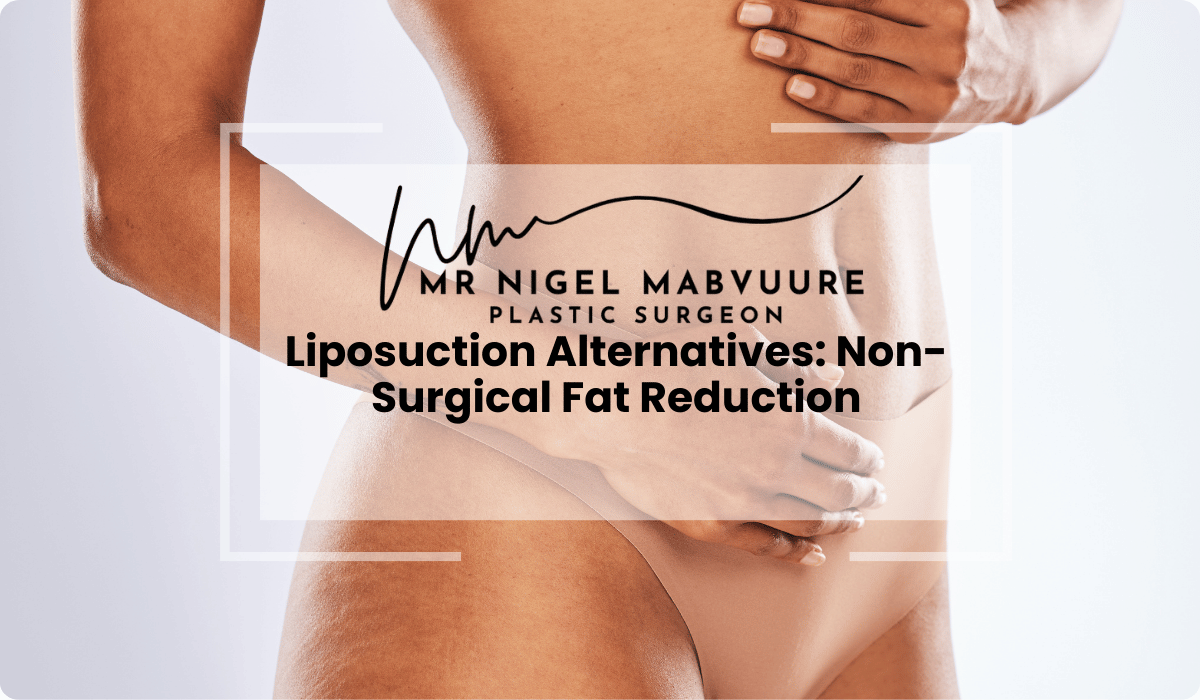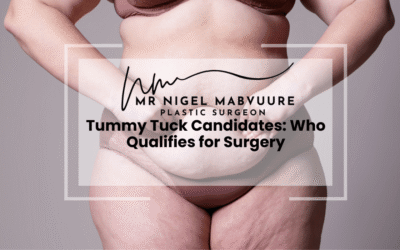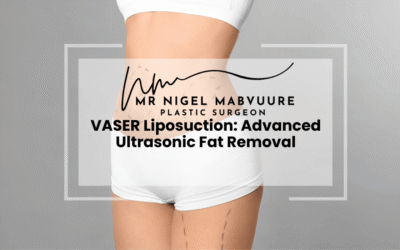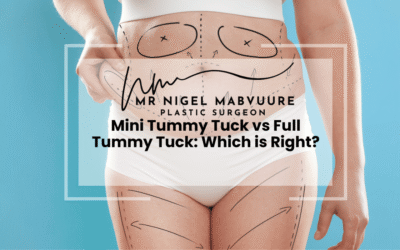Non-Surgical Fat Reduction
- Non-surgical fat reduction permanently eliminates fat cells (unlike weight loss which only shrinks them) with results developing over 1-3 months
- CoolSculpting reduces targeted fat by 20-25% per session versus liposuction’s 80%, making it ideal for those within 10-15 pounds of their goal weight
- The top non-invasive treatments include CoolSculpting (freezing), SculpSure (laser), Emsculpt (electromagnetic), Ultrashape (ultrasound), and BTL Vanquish (radiofrequency)
- Results from non-surgical treatments are permanent provided patients maintain stable weight, as remaining fat cells can still expand with significant weight gain
- Cost ranges from £400-£1,200 per session depending on technology, with most treatments requiring multiple sessions for optimal results
Table of Contents
- Understanding Non-Surgical Fat Reduction Methods
- CoolSculpting vs Liposuction: Comparing Effectiveness
- Top 5 Non-Invasive Body Contouring Treatments
- How Do Fat Freezing and Laser Fat Removal Work?
- Are Non-Surgical Fat Reduction Results Permanent?
- Radiofrequency and Ultrasound: Technology Behind Fat Reduction
- What Should You Expect to Pay for Liposuction Alternatives?
Understanding Non-Surgical Fat Reduction Methods
Non-surgical fat reduction represents a revolutionary approach to body contouring that eliminates the need for invasive procedures like traditional liposuction. These liposuction alternatives have gained tremendous popularity among patients seeking effective fat removal without the associated surgical risks, downtime, and recovery period.
The fundamental principle behind non-surgical fat reduction is the targeted destruction of fat cells through various external applications of energy or cooling technology. Unlike weight loss, which merely shrinks fat cells, these methods actually reduce the number of fat cells in treated areas. The body then naturally processes and eliminates these damaged cells over a period of weeks to months.
Most non-surgical fat reduction treatments target stubborn fat deposits that resist diet and exercise—areas like the abdomen, flanks, thighs, and under the chin. These procedures are ideal for patients who are near their target weight but struggle with localised fat pockets. It’s important to note that these treatments are not weight-loss solutions but rather body contouring procedures designed to refine your silhouette.
The appeal of non-invasive body contouring lies in several key advantages: no incisions, minimal to no downtime, reduced risk of complications, and gradual results that appear natural. However, patients should maintain realistic expectations, as results typically develop over 1-3 months and may require multiple sessions for optimal outcomes.
CoolSculpting vs Liposuction: Comparing Effectiveness
When evaluating CoolSculpting versus traditional liposuction, understanding their fundamental differences is crucial for making an informed decision. Liposuction remains the gold standard for significant fat removal, capable of extracting larger volumes of fat in a single session with immediate, dramatic results. This surgical procedure allows surgeons to precisely sculpt body contours but requires anaesthesia, incisions, and recovery time typically ranging from 1-2 weeks.
CoolSculpting, by contrast, utilises cryolipolysis—a controlled cooling technology that freezes and destroys fat cells without damaging surrounding tissues. This non-surgical alternative to liposuction requires no downtime, with most patients returning to normal activities immediately after treatment. However, results develop gradually over 8-12 weeks as the body naturally eliminates the damaged fat cells.
In terms of effectiveness, clinical studies show that CoolSculpting typically reduces treated fat by 20-25% per session, while liposuction can remove up to 80% of fat in targeted areas. This significant difference explains why CoolSculpting often requires multiple treatments for optimal results, particularly for patients with larger fat deposits.
The ideal candidate profiles also differ substantially. CoolSculpting works best for those within 10-15 pounds of their ideal weight with distinct, pinchable fat bulges. Liposuction can address larger areas and volumes of fat but requires patients to be healthy enough for surgery. For those seeking modest improvements with minimal risk and downtime, CoolSculpting offers an attractive option, while those desiring more dramatic transformation may find liposuction more suitable despite its invasive nature.
Top 5 Non-Invasive Body Contouring Treatments
The field of non-invasive body contouring has expanded dramatically, offering patients multiple options for addressing stubborn fat without surgery. Here are the five most effective non-surgical fat reduction treatments currently available:
1. CoolSculpting (Cryolipolysis)
This FDA-approved treatment remains the market leader in non-invasive fat reduction. Using controlled cooling technology, CoolSculpting freezes fat cells without harming surrounding tissues. The crystallised fat cells die and are naturally eliminated by the body over 8-12 weeks. Most effective for treating the abdomen, flanks, thighs, and under the chin, CoolSculpting typically reduces fat in treated areas by 20-25% per session.
2. SculpSure (Laser Fat Removal)
SculpSure employs laser technology to heat and destroy fat cells. This 25-minute treatment uses a 1060nm wavelength laser that selectively targets fat cells while keeping the skin’s surface cool. Particularly effective for the abdomen and flanks, SculpSure can treat multiple areas simultaneously and works well on all skin types.
3. Emsculpt
Unique among fat reduction treatments, Emsculpt not only reduces fat but also builds muscle. Using High-Intensity Focused Electromagnetic (HIFEM) technology, it induces powerful muscle contractions not achievable through voluntary exercise. These supramaximal contractions force muscle remodelling while simultaneously breaking down fat. Particularly effective for abdominal definition and buttock lifting.
4. Ultrashape
This ultrasound-based technology delivers focused ultrasonic energy to precisely target and destroy fat cells without affecting surrounding tissues. The mechanical (non-thermal) destruction of fat cells makes Ultrashape virtually painless, with no downtime. Most effective for abdominal fat reduction.
5. BTL Vanquish ME
Using radiofrequency energy, Vanquish heats fat cells to the point of apoptosis (cell death) without touching the body. The device’s unique design allows it to treat larger areas than other technologies, making it ideal for treating the entire abdominal area and flanks simultaneously. Particularly suitable for patients with higher BMIs who may not be candidates for other treatments.
How Do Fat Freezing and Laser Fat Removal Work?
Fat freezing (cryolipolysis) and laser fat removal represent two distinct technological approaches to non-surgical fat reduction, each with unique mechanisms of action and patient experiences.
Fat Freezing Technology
Cryolipolysis, commonly known as fat freezing, exploits the biological vulnerability of fat cells to cold temperatures. During treatment, the device applies controlled cooling to the targeted area, typically between -11°C and -13°C. At these temperatures, fat cells crystallise and undergo apoptosis (programmed cell death), while surrounding tissues remain unharmed due to their different freezing points.
During a fat freezing procedure, the practitioner places an applicator on the treatment area, which creates suction to draw the tissue between cooling panels. Patients typically experience intense cold for the first few minutes until the area becomes numb. The treatment lasts 35-60 minutes per application, during which patients can read, work on laptops, or even nap. Following treatment, the practitioner massages the area to break up the crystallised fat cells, enhancing their elimination.
Laser Fat Removal Process
Laser-based fat reduction utilises specific wavelengths of light energy to heat fat cells to approximately 42-47°C. This controlled heating disrupts the fat cells’ membranes, causing them to rupture. Like fat freezing, the damaged cells are then naturally processed and eliminated by the body’s lymphatic system over several weeks.
During laser fat removal, flat applicators are placed directly on the skin over the treatment area. The device cycles between heating and cooling phases to maintain comfort while effectively targeting fat cells. Patients typically describe the sensation as a warm tingling, similar to a hot stone massage. Treatments generally last 25-30 minutes, with no downtime required afterward.
Both technologies trigger a similar biological response: the gradual elimination of damaged fat cells through the body’s natural processes. This elimination phase takes 6-12 weeks, with final results becoming visible around three months post-treatment. Neither method requires incisions, anaesthesia, or recovery time, making them attractive alternatives to surgical liposuction for patients seeking subtle, natural-looking fat reduction.
Are Non-Surgical Fat Reduction Results Permanent?
The question of permanence is crucial when considering liposuction alternatives. To understand the long-term efficacy of non-surgical fat reduction, we must first examine how these treatments affect fat cells at a cellular level.
Unlike weight loss, which merely shrinks fat cells, non-surgical fat reduction methods actually destroy and eliminate fat cells from the body. Once these cells are gone, they do not regenerate—the adult body does not create new fat cells under normal circumstances. This fundamental mechanism is similar to liposuction but achieved through non-invasive means.
Clinical studies tracking patients for up to five years after cryolipolysis (fat freezing) treatments have demonstrated that the fat reduction remains stable over time, provided patients maintain their weight. Research published in the Journal of Cosmetic Dermatology showed that the fat layer reduction remained consistent even years after treatment, with no evidence of fat redistribution to untreated areas.
However, the permanence of results comes with an important caveat: while the destroyed fat cells are permanently gone, the remaining fat cells can still expand if a patient gains weight. This means that significant weight gain after treatment can compromise results, though the treated areas typically gain proportionally less fat than untreated areas.
For optimal long-term outcomes, practitioners recommend that patients:
– Maintain a stable weight through healthy diet and regular exercise
– Consider the treatment as body contouring rather than weight loss
– Understand that future weight fluctuations may affect results
– Follow a maintenance schedule if necessary (typically one session annually)
It’s worth noting that some non-surgical methods, particularly those focusing on skin tightening rather than fat reduction, may require periodic maintenance treatments to sustain results. Your practitioner should provide clear guidance on the expected longevity of your specific treatment and any recommended follow-up procedures.
Radiofrequency and Ultrasound: Technology Behind Fat Reduction
Radiofrequency (RF) and ultrasound technologies represent sophisticated approaches to non-surgical fat reduction that utilise different energy forms to target and eliminate adipose tissue. These modalities not only reduce fat but often provide the additional benefit of skin tightening, addressing multiple aesthetic concerns simultaneously.
Radiofrequency Fat Reduction
Radiofrequency treatments employ electromagnetic waves to generate controlled heat in the subcutaneous fat layer. When RF energy penetrates the skin, it creates an oscillating electrical current that meets resistance in the tissues, converting to thermal energy. This process heats fat cells to approximately 43-45°C—a temperature that triggers apoptosis (programmed cell death) while remaining below the threshold for damage to surrounding structures.
Modern RF devices utilise monopolar, bipolar, or multipolar configurations to target different tissue depths. Advanced systems incorporate real-time temperature monitoring and feedback mechanisms to maintain optimal therapeutic temperatures throughout treatment. The controlled heating not only destroys fat cells but also stimulates collagen production and tissue remodelling, resulting in improved skin texture and elasticity.
Ultrasound Fat Reduction
Ultrasound-based treatments deliver high-frequency sound waves that create mechanical disruption of fat cells through two primary mechanisms: thermal and non-thermal. Focused ultrasound energy can be precisely directed to specific tissue depths, creating either cavitation effects (non-thermal) or controlled heating (thermal) that selectively damages fat cell membranes.
High-intensity focused ultrasound (HIFU) represents the most advanced application of this technology, capable of delivering energy at precise depths without affecting the skin surface or surrounding tissues. The ultrasonic waves create microscopic air bubbles within fat cells that expand and implode, disrupting cell membranes and releasing lipids for natural elimination through the lymphatic system.
Both RF and ultrasound technologies offer distinct advantages in the non-surgical body contouring landscape. RF treatments typically excel at combined fat reduction and skin tightening, making them ideal for areas with mild skin laxity. Ultrasound treatments often achieve more precise targeting of fat at specific depths, with some systems capable of treating deeper fat deposits than other non-invasive methods.
What Should You Expect to Pay for Liposuction Alternatives?
The cost of non-surgical fat reduction treatments varies considerably based on several factors, including the specific technology used, treatment area size, number of sessions required, geographic location, and practitioner expertise. Understanding these cost structures can help patients budget appropriately and evaluate the value proposition of different liposuction alternatives.
CoolSculpting (Cryolipolysis)
In the UK, CoolSculpting typically ranges from £600 to £1,200 per treatment area per session. Most patients require 1-3 sessions per area for optimal results. A comprehensive treatment plan addressing multiple areas (such as abdomen and flanks) might cost between £2,000 and £4,000 in total.
Laser Fat Reduction (SculpSure)
SculpSure treatments generally cost between £500 and £1,000 per session per area. Most patients require 2-3 sessions spaced 6-12 weeks apart, bringing the total investment to approximately £1,500-£3,000 for a complete treatment course.
Radiofrequency Treatments
Radiofrequency-based fat reduction typically costs £400-£800 per session, with most treatment protocols requiring 4-6 sessions for optimal results. A complete treatment course might range from £1,600 to £4,800 depending on the areas treated.
Ultrasound Fat Reduction
Treatments like Ultrashape or Liposonix generally cost between £500 and £1,000 per session. Most patients require 3 sessions spaced approximately one month apart, resulting in a total cost of £1,500-£3,000.
Emsculpt
This muscle-building and fat-reducing technology commands a premium price, typically £750-£1,000 per session. The standard protocol involves 4 sessions over two weeks, bringing the total investment to £3,000-£4,000.
When comparing these costs to traditional liposuction (which typically ranges from £3,000 to £7,000 per area in the UK), non-surgical alternatives may appear similarly priced or even more expensive in some cases. However, many patients find value in avoiding surgical risks, anaesthesia, and recovery time.
Most clinics offer package pricing for multiple sessions or areas, which can significantly reduce the per-treatment cost. Additionally, many provide financing options to make these treatments more accessible. During your consultation, request a detailed breakdown of all costs involved, including any potential follow-up or maintenance sessions, to ensure you understand the complete financial commitment.
Frequently Asked Questions
How long do non-surgical fat reduction results last?
Non-surgical fat reduction results are generally permanent as the treated fat cells are destroyed and eliminated from the body. However, remaining fat cells can still expand with weight gain. Results remain stable as long as you maintain your weight through healthy diet and exercise. Clinical studies have tracked patients for up to five years after treatments like CoolSculpting, showing consistent fat reduction with no evidence of fat redistribution to untreated areas.
Which non-surgical fat reduction method is most effective?
CoolSculpting (cryolipolysis) is generally considered the most effective non-surgical fat reduction method, typically reducing treated fat by 20-25% per session. However, effectiveness varies based on individual factors and treatment areas. Emsculpt offers the unique benefit of simultaneously reducing fat and building muscle. The most effective treatment depends on your specific goals, body type, and the area being treated. A consultation with a qualified practitioner can determine the best option for your needs.
How many sessions of non-surgical fat reduction are needed to see results?
Most patients require 1-3 sessions per treatment area to achieve optimal results with non-surgical fat reduction methods. CoolSculpting typically needs 1-2 sessions, laser treatments like SculpSure usually require 2-3 sessions, radiofrequency treatments often need 4-6 sessions, and Emsculpt recommends a standard protocol of 4 sessions. Results develop gradually over 6-12 weeks following each treatment as the body naturally eliminates the damaged fat cells.
Is non-surgical fat reduction painful?
Non-surgical fat reduction treatments are generally well-tolerated with minimal discomfort. Fat freezing (CoolSculpting) causes intense cold for the first few minutes until the area becomes numb. Laser treatments (SculpSure) create a warm tingling sensation similar to a hot stone massage. Radiofrequency and ultrasound treatments may cause a warming sensation and mild discomfort. Emsculpt feels like an intense muscle workout. Most treatments require no anesthesia or pain medication, and any discomfort typically resolves immediately after the procedure.
Who is an ideal candidate for non-surgical fat reduction?
Ideal candidates for non-surgical fat reduction are within 10-15 pounds of their target weight with distinct, pinchable fat bulges that resist diet and exercise. These treatments work best for body contouring rather than weight loss. Candidates should have good skin elasticity, realistic expectations about gradual results, and be committed to maintaining a healthy lifestyle. Those with significant skin laxity, very large fat deposits, or certain medical conditions may not be suitable candidates and should consider alternative treatments.
How does the cost of non-surgical fat reduction compare to liposuction?
Non-surgical fat reduction can range from £1,500 to £4,000 for a complete treatment course, depending on the technology used and areas treated. Traditional liposuction typically costs £3,000 to £7,000 per area in the UK. While the initial cost of non-surgical options may seem comparable to liposuction, they avoid surgical fees, anesthesia costs, and recovery time expenses. Many clinics offer package pricing for multiple sessions or financing options to make treatments more accessible.




